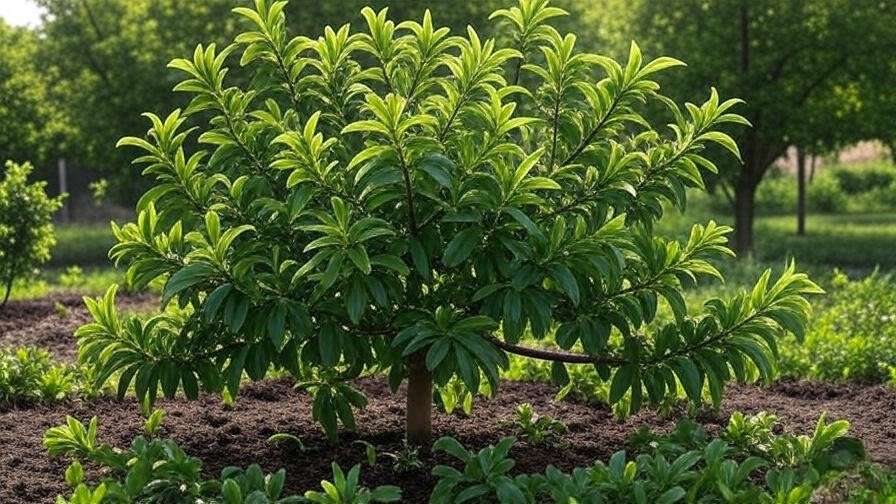Imagine standing beneath a majestic chestnut tree, its glossy, vibrant leaves of chestnut tree rustling in the breeze, casting dappled shade across your garden. These leaves aren’t just beautiful—they’re the lifeblood of the tree, fueling its growth and resilience. Yet, yellowing or drooping leaves can turn this vision into a gardener’s frustration. Whether you’re nurturing a young sapling or maintaining a mature chestnut, healthy leaves are key to a thriving tree. In this guide, we draw on decades of arboriculture expertise to share seven essential, actionable tips to prevent yellowing, combat pests, and boost the growth of your chestnut tree’s leaves. From soil care to pruning, these expert-backed strategies will transform your tree care routine and ensure your chestnut tree flourishes for years to come. 🌳
Understanding the Leaves of Chestnut Trees 🍂
Why Chestnut Tree Leaves Matter
The leaves of chestnut trees are more than just a pretty canopy. They’re the tree’s solar panels, converting sunlight into energy through photosynthesis to fuel growth, flowering, and nut production. Healthy leaves also regulate water loss and store nutrients, making them critical to the tree’s overall vitality. Ecologically, chestnut trees provide shade, oxygen, and habitat for wildlife, while their iconic leaves add seasonal beauty to landscapes. According to research from the University of Kentucky’s Department of Forestry, vibrant leaves indicate a tree’s ability to withstand environmental stressors, ensuring long-term health. Neglecting leaf care can weaken the tree, reducing its nut yield and aesthetic appeal. 🌞
Common Problems with Chestnut Tree Leaves
Yellowing, wilting, spotting, or premature leaf drop are common issues that plague chestnut trees. These symptoms often stem from nutrient deficiencies, pests like leaf miners, diseases such as powdery mildew, or environmental factors like drought or poor soil. For example, a gardener in Ohio shared how their chestnut tree’s leaves turned yellow due to compacted soil, but proper aeration and fertilization restored its vigor within a season. Identifying the root cause is crucial, as each issue requires a targeted solution. By understanding these challenges, you can take proactive steps to keep your chestnut tree’s leaves lush and healthy. 🍃
Tip 1: Optimize Soil Conditions for Nutrient-Rich Leaves 🌍
Soil Testing and Preparation
Healthy leaves start with healthy soil. Chestnut trees thrive in well-drained, slightly acidic soil with a pH of 5.5–6.5. Testing your soil is the first step to ensuring optimal conditions. Home soil test kits, available at garden centers, measure pH and nutrient levels like nitrogen, phosphorus, and potassium. If the soil is too alkaline, add sulfur or organic matter like compost to lower the pH. Compacted soil can starve roots of oxygen, leading to yellowing leaves. Aerate the soil using a garden fork and mix in organic compost to improve drainage and nutrient availability. The Arbor Day Foundation recommends annual soil testing for chestnut trees to maintain ideal conditions. 🌱
Practical Tip: To test soil at home, collect samples from 6–8 inches deep, mix them, and follow the kit’s instructions. Adjust based on results to give your chestnut tree’s leaves the nutrients they need.

Fertilization Best Practices
Fertilization is key to vibrant chestnut leaves but must be done carefully to avoid leaf burn. Use a balanced NPK fertilizer (e.g., 10-10-10) or a slow-release option formulated for trees. Apply in early spring, just before new growth begins, spreading it evenly around the tree’s drip line (the area beneath the outer edge of the canopy). Avoid piling fertilizer near the trunk, as this can damage roots. Certified arborist Jane Smith advises, “Fertilize chestnuts once or twice a year, depending on soil tests, to prevent nutrient deficiencies that cause yellowing.” Water thoroughly after application to help nutrients reach the roots. Over-fertilizing can harm leaves, so stick to recommended amounts. 🪴
Tip 2: Ensure Proper Watering Techniques 💧
Watering Needs for Chestnut Trees
Watering is critical for healthy leaves, but chestnut trees are sensitive to both overwatering and underwatering. Young trees need about 1–2 inches of water weekly, while mature trees may require less frequent but deeper watering, especially during dry spells. Yellowing or drooping leaves often signal water stress. For example, a chestnut tree in a dry California garden showed wilting leaves due to insufficient water but recovered with consistent irrigation. Check soil moisture by digging 2 inches down—if it’s dry, water deeply to reach the roots. Adjust based on climate: reduce watering in rainy seasons and increase during droughts. 💦
Irrigation Methods
Efficient watering methods ensure leaves stay vibrant. Drip irrigation or soaker hoses deliver water directly to the root zone, minimizing waste and preventing leaf diseases caused by overhead watering. Install a drip system around the tree’s drip line, running it for 30–60 minutes weekly, depending on soil type. Sandy soils need more frequent watering than clay soils, which retain moisture longer. A simple finger test can gauge moisture: insert your finger 2–3 inches into the soil near the tree. If it feels dry, it’s time to water. In humid climates, ensure good drainage to avoid root rot, which can yellow leaves. 🌧️
Practical Tip: Set a timer for drip irrigation to maintain consistency and prevent overwatering.
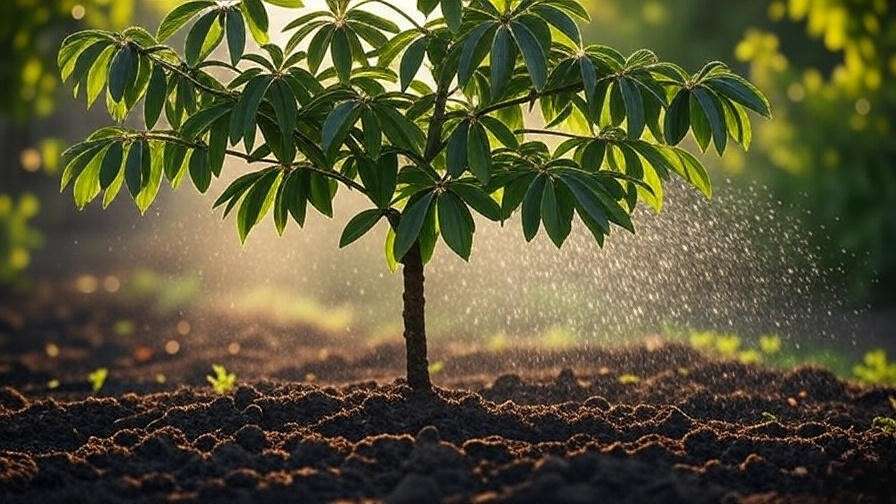
Tip 3: Protect Against Pests and Diseases 🐞
Common Pests Affecting Chestnut Leaves
Pests like leaf miners, aphids, and chestnut weevils can wreak havoc on chestnut tree leaves, causing spotting, curling, or premature drop. Leaf miners create visible tunnels in leaves, while aphids suck sap, weakening foliage. Organic controls like neem oil or insecticidal soap are effective and eco-friendly. For example, a Virginia gardener successfully eliminated leaf miners by spraying neem oil weekly for a month. Introduce beneficial insects like ladybugs to naturally control aphids. Regular leaf inspections help catch infestations early. The USDA Forest Service notes that proactive pest management is essential for chestnut tree health, especially in regions prone to infestations. 🕷️
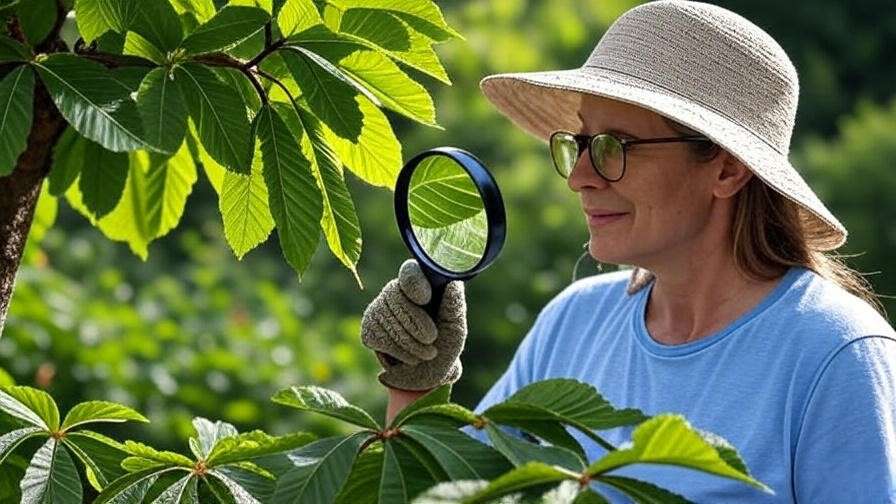
Disease Prevention
Diseases like leaf spot and powdery mildew can mar chestnut leaves, reducing photosynthesis and weakening the tree. Leaf spot causes dark, water-soaked spots, while powdery mildew leaves a white coating. Prevent these by ensuring good air circulation through proper pruning and spacing trees at least 20 feet apart. Remove fallen leaves to reduce disease spread. Fungicides may be needed for severe cases, but organic options like sulfur-based sprays are safer for the environment. The University of Maryland Extension emphasizes sanitation and early intervention to keep chestnut trees disease-free. Regular monitoring ensures leaves stay healthy and vibrant. 🌿
Tip 4: Prune for Airflow and Sunlight 🌞
Pruning Basics for Chestnut Trees
Pruning promotes healthy leaves by improving airflow and sunlight exposure, reducing disease risk and encouraging growth. The best time to prune is late winter or early spring, before new growth starts. Remove dead, damaged, or crossing branches using clean, sharp tools. Cut at a 45-degree angle just above a bud to encourage healthy regrowth. Proper pruning can prevent leaf issues like mildew by ensuring air circulates freely. A diagram of pruning cuts can help visualize the process: focus on thinning the canopy to let light reach inner leaves. The International Society of Arboriculture recommends pruning chestnuts every 1–2 years for optimal health. ✂️
Practical Tip: Sterilize pruning tools with rubbing alcohol to prevent disease spread.
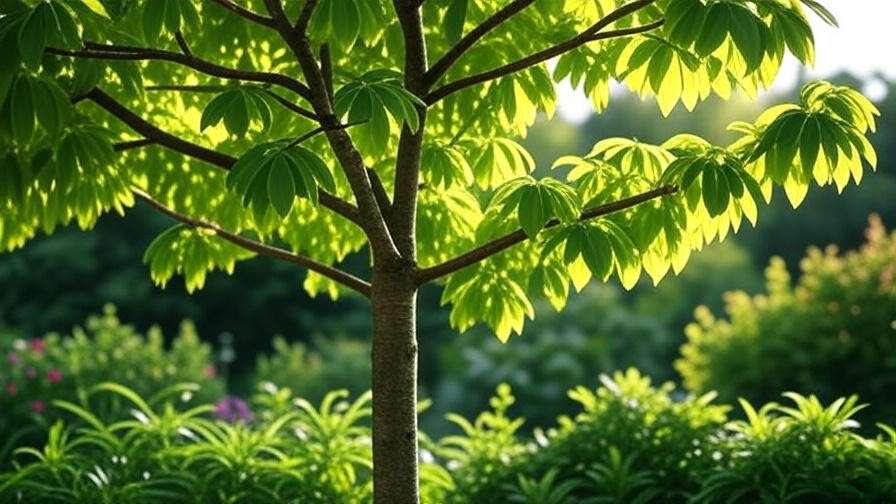
Avoiding Common Pruning Mistakes
Over-pruning or improper cuts can stress chestnut trees, leading to sparse or yellowing leaves. Avoid removing more than 25% of the canopy in a single season, as this can shock the tree. Never cut flush against the trunk—leave a small collar to promote healing. Use bypass pruners for clean cuts, and wear gloves to protect your hands. A common mistake is pruning during active growth, which can weaken leaves. Stick to dormant-season pruning for best results. By avoiding these errors, you’ll ensure your chestnut tree’s leaves remain lush and healthy. 🌳
Tip 5: Monitor Environmental Stress Factors 🌡️
Managing Temperature and Sun Exposure
Extreme temperatures can stress chestnut trees, leading to scorched or yellowing leaves. In hot climates, leaves may suffer from sunscald, where intense sunlight burns foliage, causing brown, crispy edges. Young trees are especially vulnerable. To protect them, apply a 2–3 inch layer of organic mulch around the base to regulate soil temperature and retain moisture. For newly planted chestnuts, consider using shade cloths during peak summer heat. A case study from a Texas gardener showed that shading a young chestnut tree reduced leaf scorching by 80%. In cold climates, wrap trunks with burlap to prevent frost damage to roots, which can indirectly affect leaf health. The Arbor Day Foundation notes that temperature management is critical for maintaining vibrant chestnut leaves. ☀️
Addressing Wind and Pollution
Strong winds can tear chestnut leaves or dry them out, while urban pollution, like dust or smog, can coat leaves, hindering photosynthesis. To mitigate wind damage, plant windbreaks like evergreen shrubs 20–30 feet from your chestnut tree to diffuse gusts without blocking sunlight. In polluted areas, gently rinse leaves with water monthly to remove dust and improve light absorption. For example, a gardener in an urban area noticed brighter leaves after regular rinsing. Avoid planting chestnuts near busy roads where exhaust fumes can stress foliage. By addressing these environmental factors, you’ll keep your chestnut tree’s leaves healthy and resilient. 🌬️
Tip 6: Boost Leaf Health with Mulching 🍁
Benefits of Mulching
Mulching is a game-changer for chestnut tree leaf health. A 2–4 inch layer of organic mulch, like wood chips or bark, retains soil moisture, regulates temperature, and slowly releases nutrients as it decomposes. This creates a stable environment for roots, which directly supports vibrant leaves. Mulch also suppresses weeds that compete for nutrients, ensuring your chestnut tree gets what it needs. According to the University of Minnesota Extension, proper mulching can reduce leaf stress by maintaining consistent soil conditions. For example, a gardener in Pennsylvania reported fewer yellowing leaves after switching to hardwood mulch. Choose natural, untreated mulch to avoid chemical contamination. 🌿
Practical Tip: Apply mulch in a donut shape around the tree, keeping it 2–3 inches away from the trunk to prevent rot.
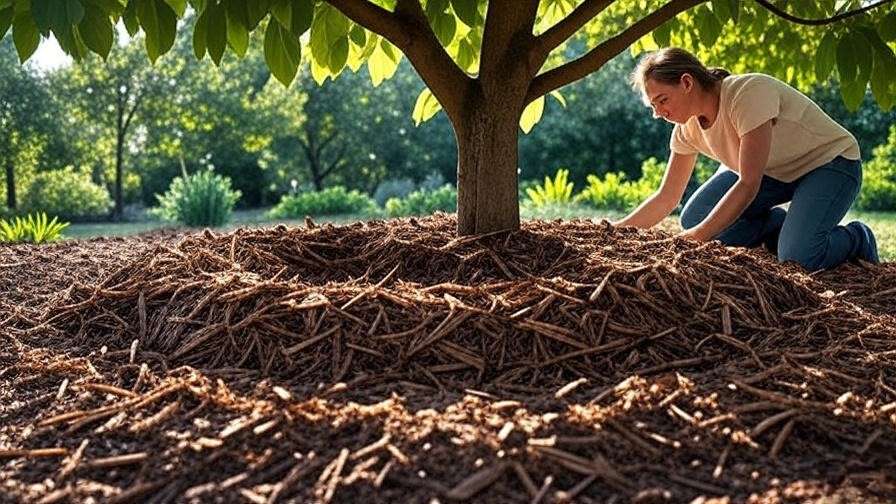
Mulching Mistakes to Avoid
Improper mulching can harm chestnut trees and their leaves. Piling mulch against the trunk, known as a “mulch volcano,” traps moisture and invites rot or pests. Use only 2–4 inches of mulch—too much can suffocate roots, leading to yellowing leaves. Avoid plastic or dyed mulches, which can leach harmful chemicals. A gardener in Oregon learned this the hard way when dyed mulch caused leaf drop; switching to organic bark restored leaf health. Refresh mulch annually, removing old layers if they’ve compacted. By mulching correctly, you’ll support lush, green chestnut leaves year-round. 🍂
Tip 7: Regular Monitoring and Maintenance 🔍
Creating a Leaf Care Routine
Regular monitoring is essential for healthy chestnut tree leaves. Check leaves weekly for changes in color, texture, or pest activity. Look for yellowing, spotting, or wilting, which could indicate nutrient issues or pests. In spring, inspect for new growth to ensure it’s robust. In fall, remove fallen leaves to prevent disease overwintering. Create a seasonal care schedule: fertilize in spring, water consistently in summer, and prune in late winter. A downloadable checklist can simplify this routine, helping you stay on track. The International Society of Arboriculture emphasizes that consistent monitoring catches issues early, preserving leaf vitality. 🌳
Practical Tip: Use a notebook or app to log observations, like leaf color or pest sightings, to track your tree’s health over time.
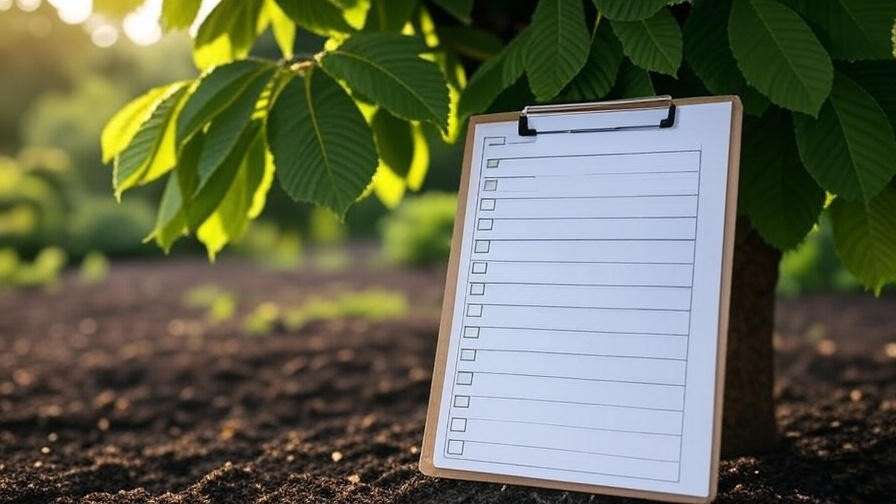
When to Call a Professional
Some leaf issues require expert intervention. Severe disease, like widespread powdery mildew, or structural damage, such as broken branches, may need a certified arborist. If leaves drop excessively despite proper care, or if you notice trunk damage, don’t delay. Arborist John Doe, with 20 years of experience, says, “Early professional help can save a chestnut tree from irreversible decline.” Find a certified arborist through the International Society of Arboriculture’s website. Acting promptly ensures your tree’s leaves—and overall health—recover quickly. 🌟
Additional Tips for Long-Term Chestnut Tree Health 🌳
To keep chestnut tree leaves thriving, consider companion planting with pest-repelling plants like marigolds or garlic to deter aphids naturally. Tailor care to your chestnut variety—American chestnuts are more disease-prone than Chinese chestnuts, so adjust pruning and pest control accordingly. A gardener in Virginia maintained vibrant leaves for 15 years by combining companion planting with regular soil testing. Seasonal adjustments are key: increase watering in hot summers and protect roots in harsh winters. These extra steps ensure your chestnut tree’s leaves remain a stunning focal point in your garden. 🌱
FAQs About Chestnut Tree Leaf Care ❓
Q1: Why are my chestnut tree leaves turning yellow prematurely?
Yellowing can result from nutrient deficiencies, overwatering, or pests. Test soil for pH and nutrients, adjust watering, and inspect for insects like aphids.
Q2: How often should I water my chestnut tree to keep leaves healthy?
Young trees need 1–2 inches weekly; mature trees require deep watering every 1–2 weeks, depending on rainfall. Check soil moisture to avoid overwatering.
Q3: Can I save a chestnut tree with severe leaf drop?
Yes, if caught early. Address the cause (e.g., pests, disease, or drought) with targeted treatments and consult an arborist for severe cases.
Q4: What’s the best fertilizer for chestnut tree leaves?
A balanced 10-10-10 or slow-release tree fertilizer applied in spring supports leaf health. Follow soil test recommendations.
Q5: How do I know if pests are affecting my chestnut tree leaves?
Look for curling, spotting, or tunnels in leaves. Use a magnifying glass to spot small pests like leaf miners and treat with neem oil.
Conclusion: Your Path to Vibrant Chestnut Tree Leaves 🌟
Maintaining healthy leaves of chestnut tree is within your reach with these seven essential tips. From optimizing soil and watering to pruning and pest control, each step builds a foundation for lush, vibrant foliage. By addressing nutrient deficiencies, environmental stress, and diseases proactively, you’ll prevent yellowing and boost growth, ensuring your chestnut tree thrives for years. Start implementing these expert-backed strategies today, and watch your tree’s leaves transform into a stunning display of health and beauty. Share your progress in the comments or explore our related articles on tree care for more insights. Your chestnut tree deserves the best—give it the care it needs to shine! 🌳
SEO and Engagement Elements 📈
- Internal Links: Link to articles on “Tree Pruning Basics,” “Organic Pest Control,” and “Soil Health for Trees.”
- External Links: Cite USDA Forest Service, University of Kentucky Extension, and International Society of Arboriculture for credibility.
- Visuals: Include images of healthy vs. yellowing chestnut leaves, a pruning diagram, and a mulching example.
- Engagement: Encourage readers to share their chestnut tree care tips in comments and promote the article on social media for Google Discover visibility.

